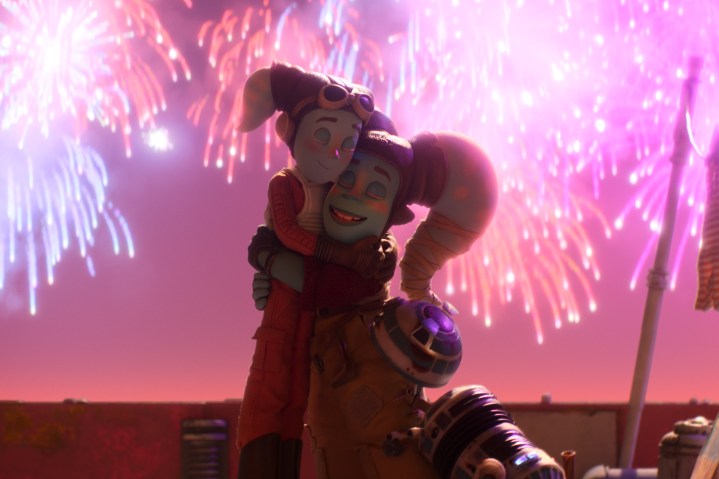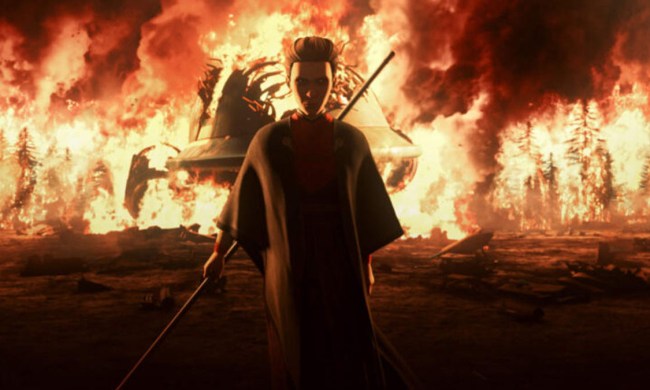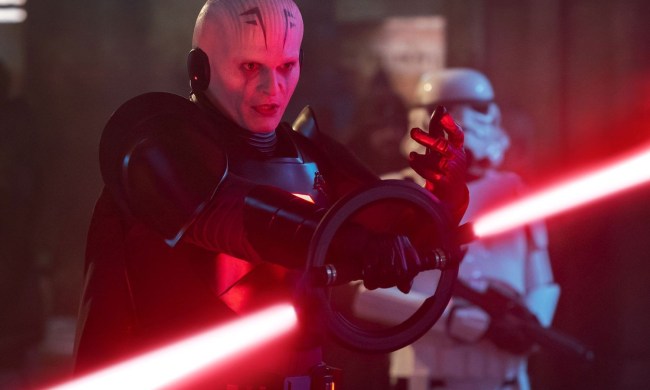“With its second batch of shorts, Star Wars: Visions has cemented its place as one of the most exciting and refreshing titles that Lucasfilm has right now.”
- A handful of surprisingly personal, culturally distinct shorts
- Visually stunning and unique animation styles featured throughout
- A few shorts feel less substantial than others
When Disney originally acquired Lucasfilm back in 2012, few could have predicted that one of the studio’s most exciting projects would turn out to be an anthology series of animated shorts, but such is the charm of Star Wars: Visions. The series, which gives different animation studios from all over the world the chance to tell their own short stories set within Lucasfilm’s most prized fictional universe, embraces the wonder of Star Wars’ sci-fi world better than almost any other film or TV show that Disney has produced over the past eight years.
Nearly two years after its 2021 premiere, Star Wars: Visions returns this week with its long-awaited second volume of episodes. While not all of the series’ new installments are as successful as others, it should come as a relief to fans that Star Wars: Visions still feels like the worthwhile creative gambit that it did two years ago. There are, in fact, a handful of adventures contained within Star Wars: Visions Volume 2 that are among the most thrilling and original that Lucasfilm has delivered in recent years.

As was the case with the show’s first batch of shorts, there isn’t a plot description to give for Star Wars: Visions Volume 2. Its episodes all tell self-contained stories that have little-to-nothing to do with each other outside of their shared, galactic setting. However, unlike the series’ first nine episodes, which were created by seven animation studios based solely in Japan, Star Wars: Visions Volume 2 features work from artists from all around the world. That means there’s not only greater visual variety between the show’s newest episodes, but even more diverse cultural touches and perspectives.
One installment titled The Spy Dancer, for instance, was written and directed by Julien Chheng, the CEO of Studio La Cachette, a French animation house. While the episode feels like it could conceivably exist in the Star Wars world, too, its studio’s French origins are apparent throughout, so much so that The Spy Dancer often feels like a World War II-era French resistance story. Another episode, meanwhile, was created by the stop-motion artists over at Aardman, and it boasts the same heart and uniquely British sense of humor as the studio’s previous films (Chicken Run, Wallace & Gromit: The Curse of the Were-Rabbit, and many others).
The greater diversity of its Volume 2 artists ensures that all of Star Wars: Visions’ latest shorts look, sound, and feel distinct from each other. One standout installment, titled Aau’s Song, comes from the Cape Town, South Africa-based Triggerfish Animation Studios, and it visually and narratively embraces a level of gentleness that feels like a genuine first for the Star Wars franchise. More than anything, the episode’s singular character designs and aesthetic work in tandem with its folkish story to create a Star Wars adventure that feels like it truly could have only been made by those who originally conceived it.

As is often the case with anthological shows, not all of the adventures that Star Wars: Visions Volume 2 has to offer are particularly memorable. The volume’s first short, titled Sith, feels too thinly sketched and abstract to make much of an impact. The aforementioned Aardman short, I Am Your Mother, similarly feels significantly less substantial than the rest of Visions’ newest efforts, and it ranks as one of the shortest of Volume 2’s animated adventures. The Studio Mir-produced Journey to the Dark Head, for its part, features arguably the most thrilling action sequences of any of Star Wars: Visions’ shorts, but its thematic ideas also feel like ones that have already been explored countless times before.
Its weaker episodes aside, though, Star Wars: Visions’ second season is, for all intents and purposes, a smashing success. The wider array of international artists behind Volume 2 allows it to feature stories that pay direct homage to cultures that have never been integrated into the Star Wars universe before. One short, titled The Bandits of Golak, comes from the India-based 88 Pictures, and the architecture, character designs, and costumes featured throughout it feel directly inspired by real-life Indian culture. The same goes for one of Star Wars: Visions Volume 2’s other memorable shorts, In the Stars, which wears the Chilean origins of its PunkRobot creators proudly on its sleeve.

While the shorts featured in Star Wars: Visions Volume 2 boast more than their fair share of elaborately staged set pieces, twists, and sci-fi-inspired imagery, its franchise’s obvious stylistic pleasures feel less important to the anthology series this time around. There’s real heart and humanity at the center of many of the show’s latest adventures, and most end up packing a bigger emotional punch than viewers may initially expect. In other words, for as many narrative twists as they have to offer, the most surprising thing about Visions’ newest episodes is just how personal so many of them ultimately feel.
All of which is to say that Star Wars: Visions Volume 2 pulls off a feat that feels increasingly rare right now. By striving to spotlight the work of more than a dozen lesser-known animation studios, Visions has once again become a vehicle for not only some of the most visually unique Star Wars adventures to date, but also some of the franchise’s most deeply felt and personal. The series’ greatest achievement, consequently, lies in how it has proven two seasons in a row now that it is still possible for new Star Wars stories to feel like they were made by real artists, rather than by faceless corporate committees.
Star Wars: Visions Volume 2 debuts Thursday, May 4 on Disney+. Digital Trends was given early access to all 9 of the series’ new episodes.




